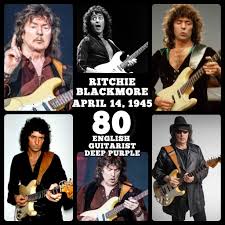Ritchie Blackmore is a name that echoes through the halls of rock history. Known as the founding guitarist of Deep Purple and later Rainbow, Blackmore’s style, tone, and musical decisions made him one of the most innovative guitarists of the 20th century. But his departure from the world of hard rock in the late ’90s left many fans wondering: What happened to Ritchie Blackmore? The answer lies in an unexpected direction—medieval folk music—and a band called Blackmore’s Night.
The Rise with Deep Purple
Blackmore first gained international fame in the late 1960s as the lead guitarist of Deep Purple, a band that would come to define hard rock and early heavy metal. His riff in “Smoke on the Water” is one of the most recognizable guitar lines in music history. But it wasn’t just catchy riffs—his technical skill, classical influences, and aggressive tone made him stand out even among the era’s guitar heroes.
However, behind the scenes, tensions were mounting. Blackmore was known for being intense, moody, and uncompromising when it came to his music. These qualities helped him create legendary tracks, but also led to frequent clashes with bandmates.
Founding Rainbow and Chasing a New Sound
After leaving Deep Purple in 1975, Blackmore founded Rainbow, a project that allowed him greater creative freedom. Partnering with powerhouse vocalist Ronnie James Dio, Rainbow embraced a more epic, fantasy-laced sound. Songs like “Stargazer” and “Man on the Silver Mountain” became classics. Rainbow gave Blackmore the space to explore more melodic and classically influenced arrangements while keeping his rock edge.
But even Rainbow couldn’t hold Blackmore’s attention forever. By the 1990s, he had grown disillusioned with the rock scene altogether.
The Birth of Blackmore’s Night
In 1997, Ritchie Blackmore made one of the most unexpected moves in rock history: he stepped away from electric guitar-driven rock and formed a Renaissance-inspired folk duo with singer (and now wife) Candice Night. They called themselves Blackmore’s Night.
The group blended elements of medieval, baroque, and Renaissance music with modern folk and soft rock. It was a bold shift, especially for someone so closely tied to the image of hard rock. But Blackmore wasn’t interested in repeating himself. He was pursuing what he loved most—melody, emotion, and historical musical styles.
Why He Remains Popular Today
Blackmore’s lasting popularity can be traced to a few key factors:
- Musical Integrity – He has always followed his own path, regardless of trends or commercial expectations. This authenticity resonates deeply with fans.
- Timeless Guitar Work – Whether it’s a fiery solo from a Deep Purple concert or a delicate acoustic melody from Blackmore’s Night, his playing remains instantly recognizable and emotionally powerful.
- Versatility – Blackmore has shown he can master vastly different styles—from proto-metal to folk—and still bring something uniquely his own to each project.
- Mystique and Independence – Unlike many rock stars who chase the spotlight, Blackmore has kept a low profile in recent years. That mystique keeps fans intrigued.
- Legacy in Rock History – Even after decades, his influence is heard in countless guitarists who cite him as a major inspiration.
Conclusion
Ritchie Blackmore’s journey from stadium-filling rock god to lute-playing minstrel might seem strange to some, but it’s a testament to his artistic courage. He left Deep Purple not because he had to—but because he wanted to explore new frontiers. Today, whether you’re blasting “Highway Star” or relaxing to “Fires at Midnight,” one thing remains clear: Ritchie Blackmore is a true original, and his musical legacy continues to grow far beyond the world of hard rock.
Let me know if you’d like this adapted for a blog post, YouTube script, or social media carousel!



